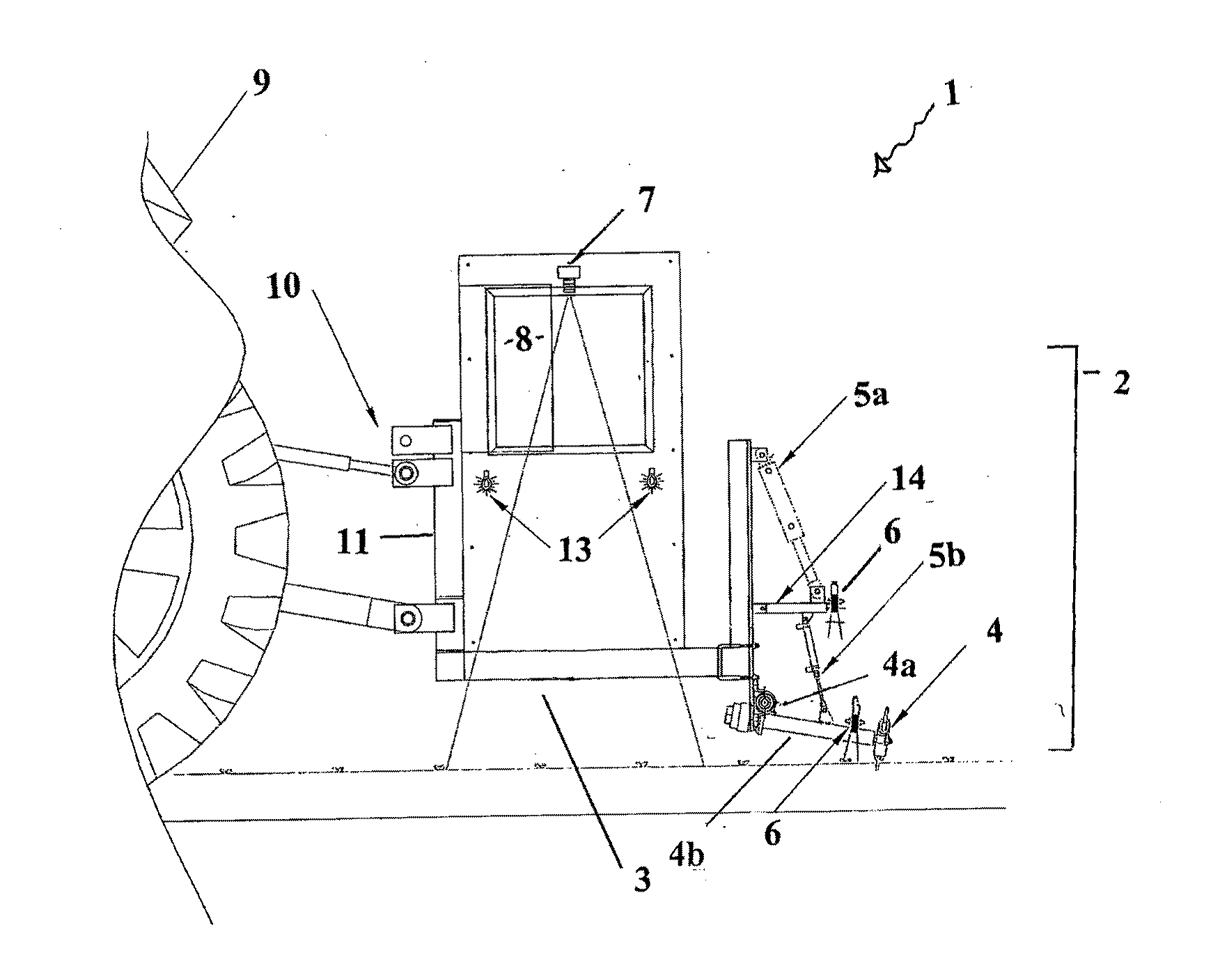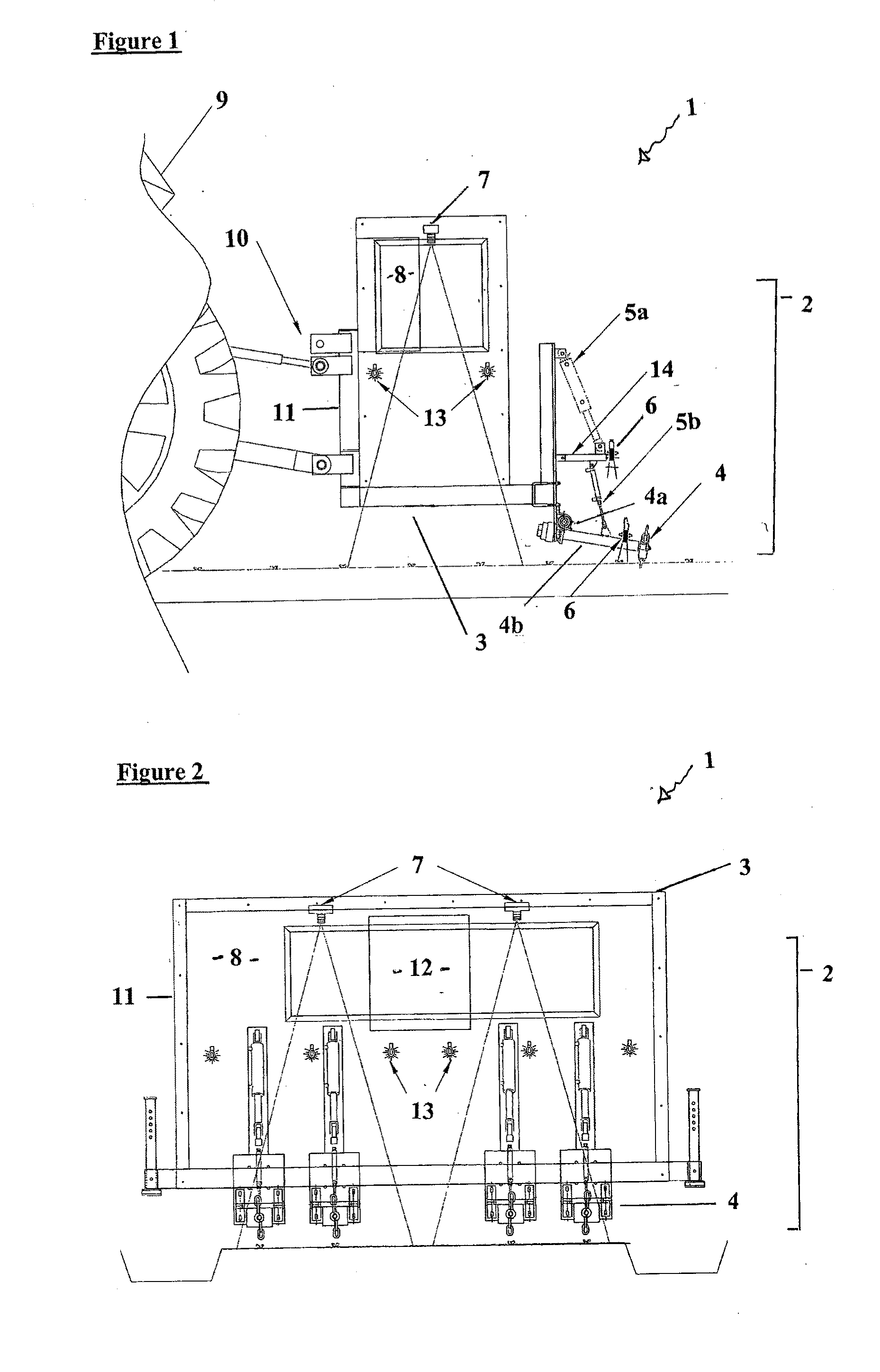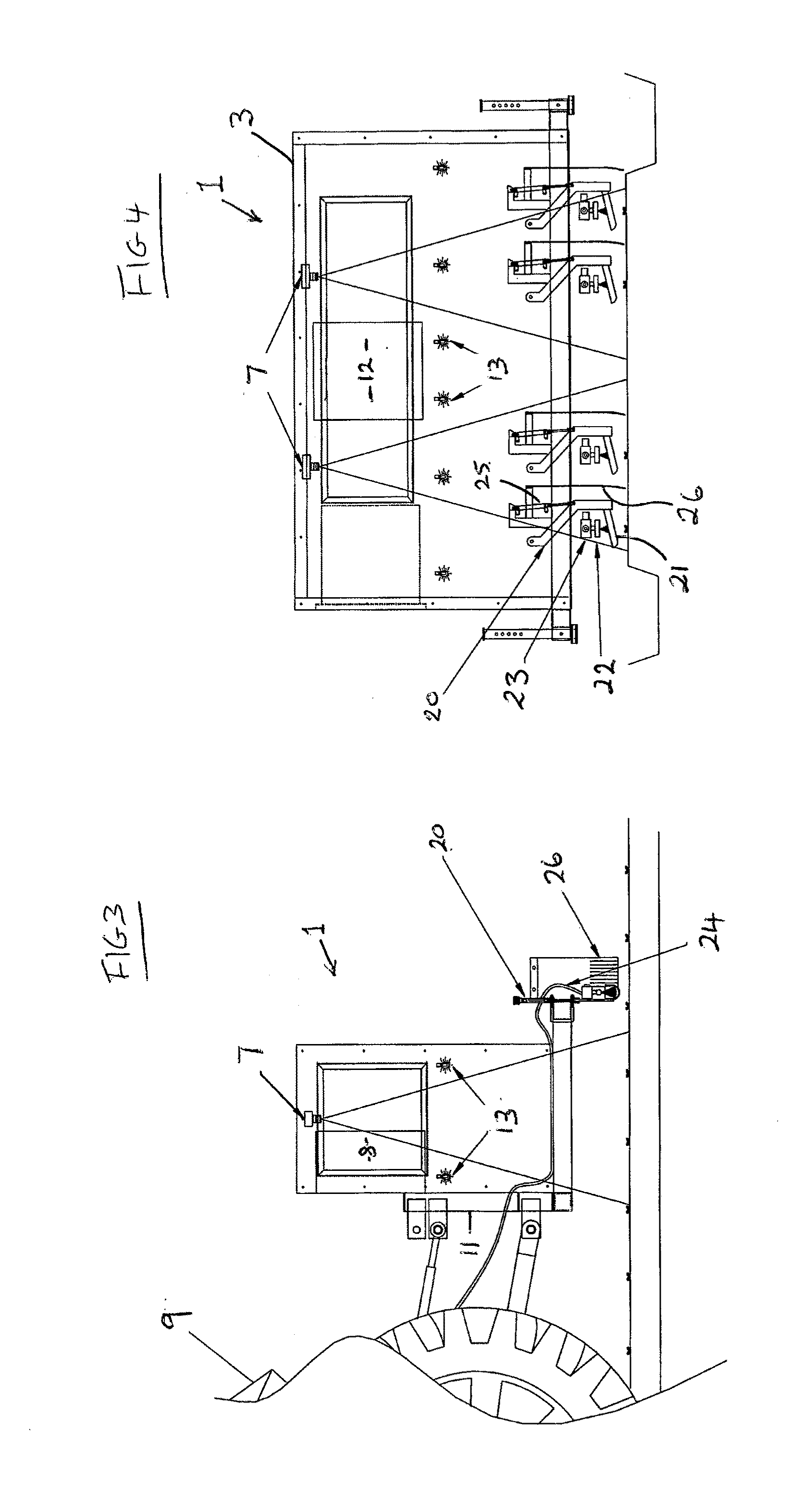Crop thinning systems
a technology of crop thinning and crop thinning, applied in the field of crop thinning systems, can solve the problems of plant loss, increased risk of disease, and increased risk of plant death
- Summary
- Abstract
- Description
- Claims
- Application Information
AI Technical Summary
Benefits of technology
Problems solved by technology
Method used
Image
Examples
Embodiment Construction
[0107]With reference to the figures there is illustrated thinning or weeding apparatus for use in thinning crop plants or weeding undesirable plants, generally indicated by arrow 1. The thinning apparatus is adapted to thin crop plants from multiple adjacent and parallel rows, in such a manner that the crop plants are staggered such that a plant in one row does not negatively impact on the growth potential of a plant in an adjacent row.
[0108]In the case of the thinning apparatus according to FIGS. 1 and 2 the apparatus includes a thinning assembly 2 and a thinning assembly carriage 3.
[0109]The thinning assembly includes thinning means 4 for thinning the crop plants. The thinning means is a rotary flail, or other apparatus adapted to destroy the plants determined to be thinned out.
[0110]The thinning assembly also includes positioning means 5 operating in conjunction with sensing means 6 to effect positioning of the thinning means relative the crop plants and the ground.
[0111]The thin...
PUM
 Login to View More
Login to View More Abstract
Description
Claims
Application Information
 Login to View More
Login to View More - R&D
- Intellectual Property
- Life Sciences
- Materials
- Tech Scout
- Unparalleled Data Quality
- Higher Quality Content
- 60% Fewer Hallucinations
Browse by: Latest US Patents, China's latest patents, Technical Efficacy Thesaurus, Application Domain, Technology Topic, Popular Technical Reports.
© 2025 PatSnap. All rights reserved.Legal|Privacy policy|Modern Slavery Act Transparency Statement|Sitemap|About US| Contact US: help@patsnap.com



